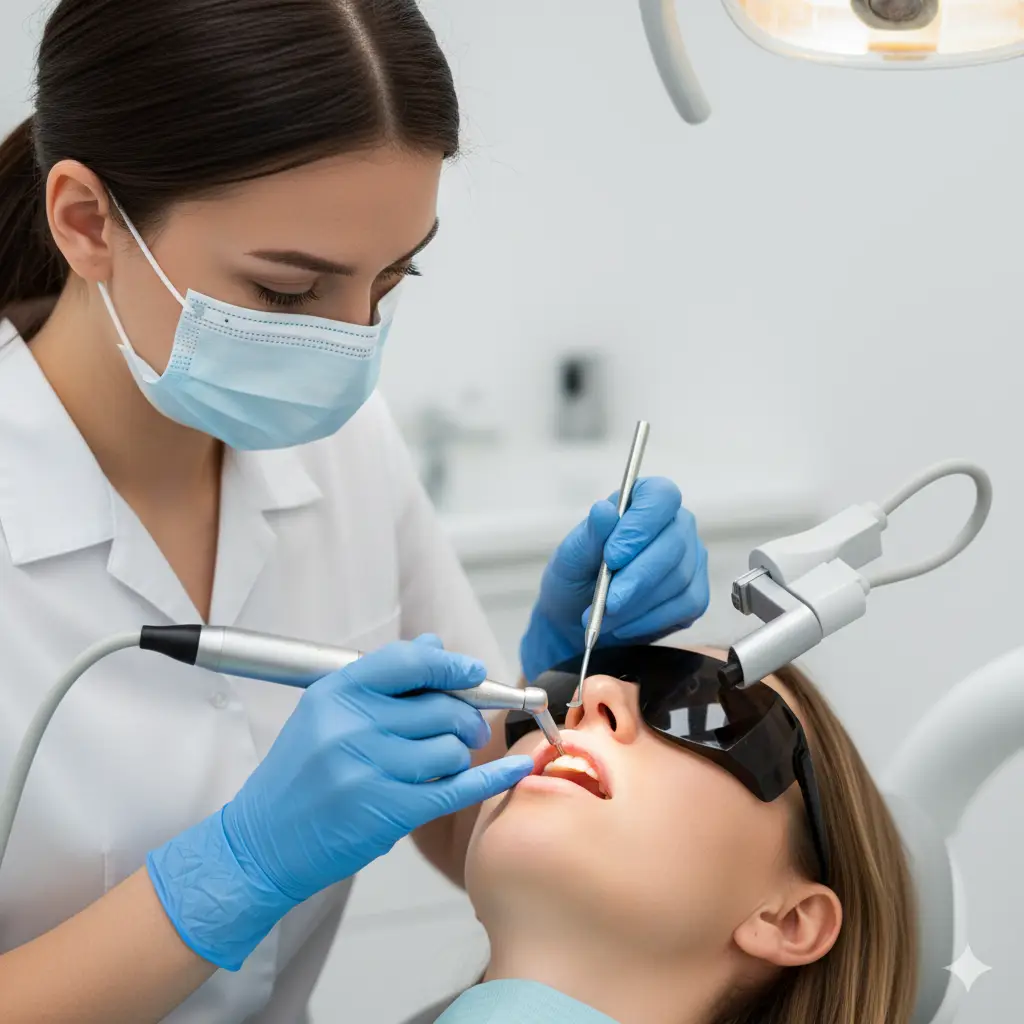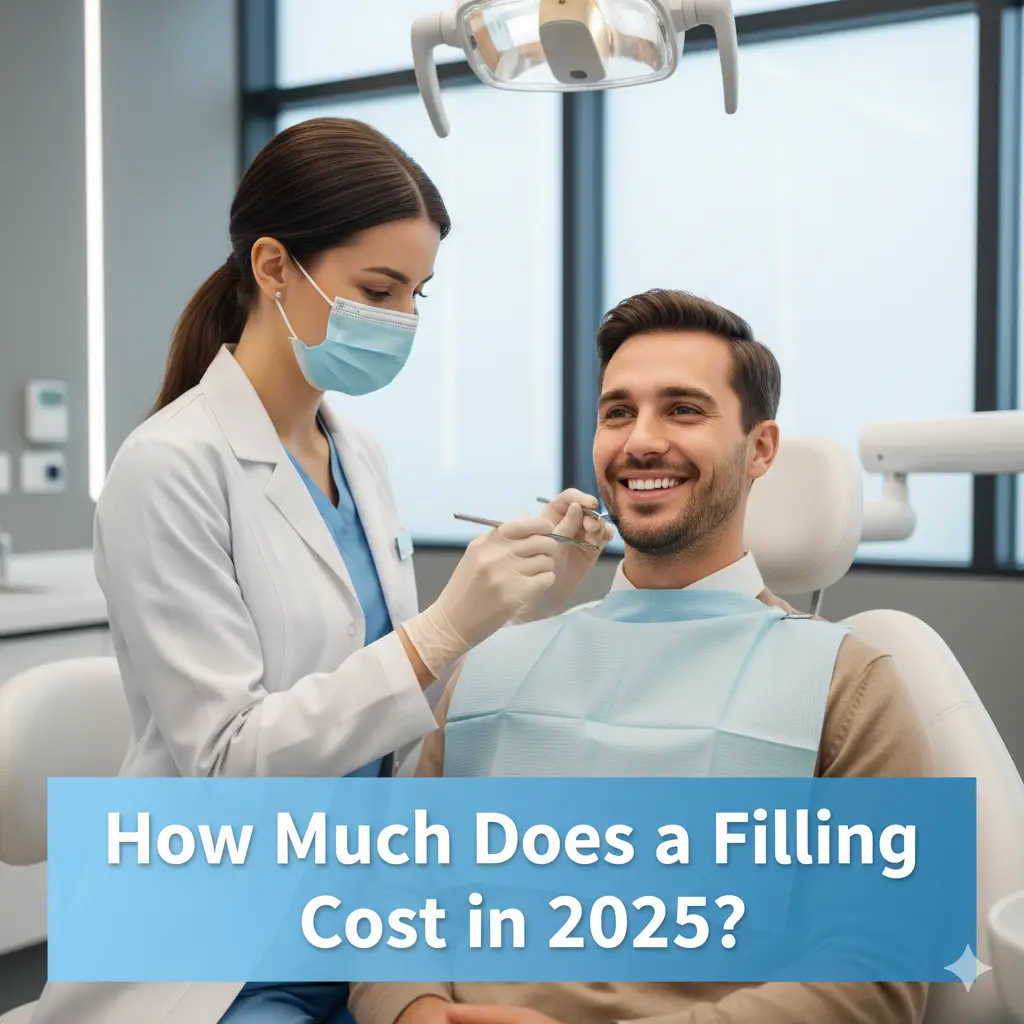🦷 How Much Does a Filling Cost (2025 Guide)
Tooth fillings are one of the most common dental treatments worldwide. Whether you have a small cavity or a cracked tooth, a filling helps protect your teeth and prevent further damage. But the question most people ask before visiting a dentist is: “How much does a filling cost?”
Let’s explore the real costs, factors that affect prices, and how insurance can make a big difference.
🪥 What Is a Dental Filling?
A dental filling is a treatment used to restore a tooth damaged by decay or fracture. The dentist removes the decayed part of the tooth and fills the space with a special material like composite resin, amalgam, gold, or porcelain.
This process not only repairs your tooth but also stops bacteria from spreading and causing further damage.
💰 Average Cost of a Filling
The average cost of a filling depends on the type of material used, the tooth’s location, and whether you have dental insurance.
Here’s a quick cost breakdown:
| Filling Type | Average Cost (Without Insurance) | Average Cost (With Insurance) |
|---|---|---|
| Amalgam (Silver) | $100 – $200 per tooth | $50 – $100 |
| Composite (White/Tooth-Colored) | $150 – $300 per tooth | $75 – $150 |
| Gold Filling | $600 – $2,500 per tooth | $300 – $900 |
| Porcelain Filling | $500 – $2,000 per tooth | $250 – $800 |
So, how much does a filling cost on average? Usually between $150 to $400 for a single tooth if you’re paying out-of-pocket.

🏦 How Much Does a Filling Cost Without Insurance?
If you don’t have dental insurance, the cost can feel heavy. On average, tooth filling cost without insurance ranges between $150 to $450 depending on the material and location.
Molars are more expensive to fill since they are harder to reach and often need more material.
Composite fillings (tooth-colored) cost more than silver fillings because they look natural and require more precision.
So, how much does a filling cost without insurance? Usually around $200–$250 per tooth.
🩺 How Much Does a Filling Cost With Insurance?
If you have dental insurance, you’re in luck. Most insurance plans cover 50% to 80% of the cost.
This means you may only pay $50–$150 for a composite filling.
However, some insurance plans have annual limits. Always check if your plan covers the type of material your dentist uses.
⚙️ Factors That Affect Tooth Filling Cost
Several factors decide how much does a filling cost at your dentist:
-
Type of Material – Gold and porcelain cost the most, while amalgam is cheapest.
-
Size and Location – Bigger cavities or back teeth cost more.
-
Dentist’s Experience – Specialists may charge higher fees.
-
Geographic Location – Costs are higher in large cities than in small towns.
-
Number of Fillings – Multiple fillings increase total cost.
-
Additional Treatments – X-rays, anesthesia, or exams may add extra charges.
🦷 Tooth Filling Cost for Different Materials
Let’s go deeper into how each material affects the tooth filling cost.
1. Amalgam (Silver)
-
Cost: $100–$200 per tooth
-
Durability: 10–15 years
-
Looks: Not tooth-colored, visible when you smile
-
Best for: Back teeth or molars
2. Composite (White)
-
Cost: $150–$300 per tooth
-
Durability: 5–10 years
-
Looks: Blends naturally with teeth
-
Best for: Front teeth
3. Gold Fillings
-
Cost: $600–$2,500 per tooth
-
Durability: Up to 20 years
-
Looks: Visible but strong
-
Best for: Long-lasting restoration
4. Porcelain Fillings
-
Cost: $500–$2,000 per tooth
-
Durability: 10–15 years
-
Looks: Very natural and aesthetic
-
Best for: Visible front teeth

🪙 Average Cost Based on Number of Fillings
| Number of Fillings | Average Total Cost (Without Insurance) |
|---|---|
| 1 Tooth | $150–$400 |
| 2 Teeth | $300–$800 |
| 3 Teeth | $450–$1,200 |
| Full Mouth | $2,000–$5,000 |
🧾 How Much Does It Cost to Fill a Cavity?
The cavity filling cost depends on how deep and wide the cavity is.
Small cavities may cost $100–$200, while large ones can reach $400 or more.
So, if you’re wondering how much does a filling cost for a cavity, it’s around $150–$300 in most cases.
⚖️ Tooth Filling Cost vs. Tooth Extraction
Sometimes people avoid fillings because of the cost, but removing a tooth can lead to more expenses later (implants, bridges, etc.).
Even if tooth filling cost feels high, it’s cheaper long-term because it saves your natural tooth.
🪄 Ways to Save Money on Dental Fillings
Here are a few smart ways to lower the filling cost:
-
Use dental discount plans or membership programs.
-
Visit dental schools where students perform supervised procedures at a low cost.
-
Ask for amalgam fillings (cheaper option).
-
Compare dentist quotes in your city.
❓ FAQs About Filling Costs
1. How much does a cavity filling cost in 2025?
On average, between $150 and $400 per tooth, depending on material and insurance.
2. How much is a tooth filling without insurance?
Usually between $150 to $450, depending on material and size.
3. Does dental insurance cover fillings?
Yes, most plans cover 50–80% of the cost.
4. Are white fillings more expensive?
Yes, composite fillings (white) cost more because they look natural.
5. How long do fillings last?
They last 5 to 15 years, depending on material and care.
6. Can I get a filling for free?
Some government or community dental clinics offer low-cost or free fillings.
7. Is it cheaper to fill or remove a tooth?
It’s cheaper to fill, extraction and replacement cost much more later.

🩹 Final Thought
So, how much does a filling cost really depends on your situation, type of material, number of cavities, and insurance coverage.
But investing in a filling today can save you from costly dental work in the future.
Regular checkups, brushing twice a day, and flossing can reduce the need for fillings altogether.
Your smile is worth it, don’t delay your dental visit!
🔗 Related Post Ideas
-
Types of Tooth Fillings: Which One Is Right for You?
-
Dental Crown vs Filling: What’s the Difference?
-
10 Ways to Prevent Cavities Naturally
-
How to Take Care of Your Teeth After a Filling

